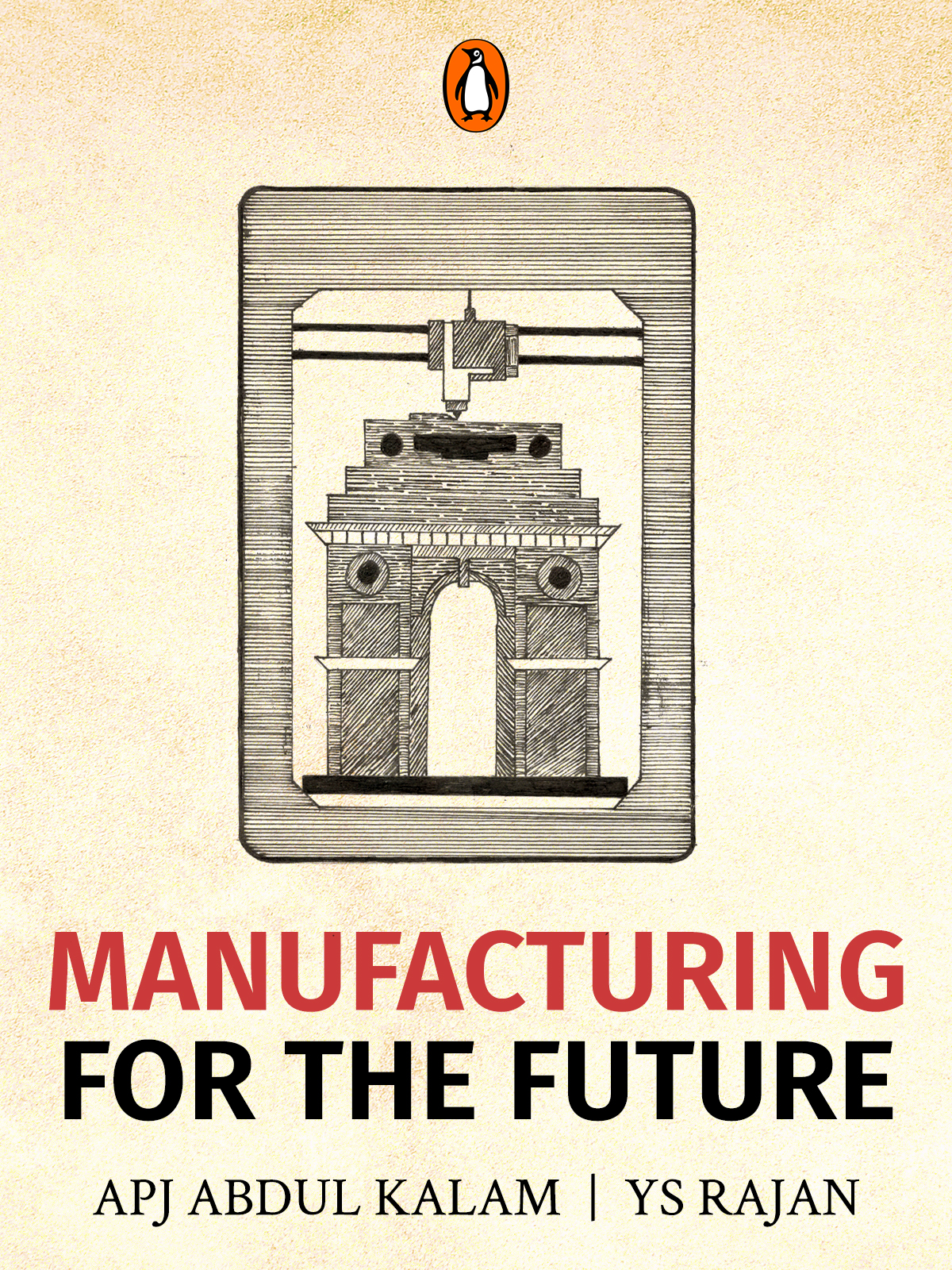
© 2020 Penguin India

A country of a billion-plus people has to excel in many crucial sectors; manufacturing is one of them.’
Mankind has seen rapid transformation in the last 150 years with the advent of electricity and its large-scale application, which led to mass-manufacturing techniques that were perfected in western nations and later taken to new levels of efficiency by Japan. The presence of traditional Indian skills in medicine, metallurgy, construction, textiles, hydraulics, or early shipbuilding, was an integral part of our innovation in ancient and medieval times. However, India was a latecomer when it came to learning new manufacturing techniques invented in Europe.
India stands to gain enormously by the coupling of computers and the manufacturing process. But how do we go about realizing this vision, drawing out the great potential of our people?
Read on as A.P.J. Abdul Kalam and Y.S. Rajan elaborate upon answering the most fundamental questions about India’s manufacturing potential in Manufacturing for the Future.
Imprint: Penguin
Published: Nov/2018
Length : 16 Pages
MRP : ₹15.00
Imprint: Penguin Audio
Published:
ISBN:
Imprint: Penguin
Published: Nov/2018
ISBN: 9789353054403
Length : 16 Pages
MRP : ₹15.00
A country of a billion-plus people has to excel in many crucial sectors; manufacturing is one of them.’
Mankind has seen rapid transformation in the last 150 years with the advent of electricity and its large-scale application, which led to mass-manufacturing techniques that were perfected in western nations and later taken to new levels of efficiency by Japan. The presence of traditional Indian skills in medicine, metallurgy, construction, textiles, hydraulics, or early shipbuilding, was an integral part of our innovation in ancient and medieval times. However, India was a latecomer when it came to learning new manufacturing techniques invented in Europe.
India stands to gain enormously by the coupling of computers and the manufacturing process. But how do we go about realizing this vision, drawing out the great potential of our people?
Read on as A.P.J. Abdul Kalam and Y.S. Rajan elaborate upon answering the most fundamental questions about India’s manufacturing potential in Manufacturing for the Future.
A.P.J. Abdul Kalam was one of India’s most distinguished scientists,
responsible for the development of the country’s first satellite launch vehicle
and the operationalization of strategic missiles. He also pioneered India
Vision 2020, a road map for transforming India. The President of India
between 2002 and 2007, Dr Kalam was awarded honorary doctorates from
thirty-eight universities and the country’s three highest civilian honours-
the Padma Bhushan (1981), Padma Vibhushan (1990) and Bharat Ratna
(1997). A prolific and bestselling author, he conducted lectures on societal
development in many international institutes and was involved in research
on different societal missions. Dr Kalam passed away in July 2015.
Yagnaswami Sundara Rajan is a well-recognized authority and a thought leader on technology development, business management and society linkages. He held various positions of responsibility related to science and technology between 1988 and 2002 and has shaped key policies and implemented several successful R&D projects with industry participation. He was awarded the Padma Shri in 2012. Srijan Pal Singh is an engineer and management graduate from the Indian Institute of Management, Ahmedabad. He was with the Indian Institute of Space Sciences and Technology (IIST) where he directly worked with Kalam as a scientific advisor.
The Constitution of India came into effect on 26th January, 1950. As we celebrate India’s 72nd Republic Day, let’s dig deeper to understand the journey till this day in 1950, and our journey since then. Here is a list of books from various authors, including Abhinav Chandrachud, Ramachandra Guha, Khushwant Singh, Sagarika Ghosh, K.R. Narayanan […]
